Not registered?
If you have not yet registered on the Valsir web site fill in the form with your details and obtain free access to the download area where you will be free to download our price lists and technical brochures. You will also have the possibility of receiving our periodic newsletter: the best way to remain up-to-date on all the latest developments in Valsir.
Valsir performed a LCA on the polyethylene and polypropylene pipe.
Life Cycle Assessment is a technique to assess the “environmental impact” of the product, “from the cradle to the grave”.
It is performed by quantifying the impact resulting from the use of resources (energy, raw materials, water) and from environmental releases (to the air, water and land), the consequences for human health, the quality of the ecosystem and the depletion of resources.
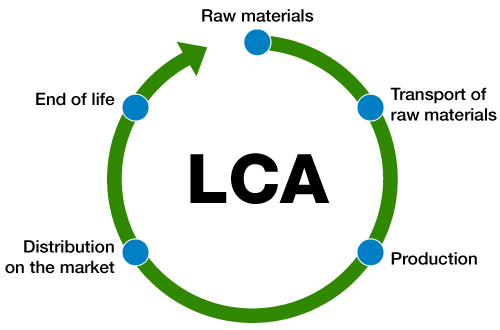
All the processes that contribute to obtaining the product are analysed and assessed, as if they were examined under a magnifying glass, from the production and transport of the raw materials, to the manufacturing process itself, from distribution on the market and use, to its disposal or recycling.
It was decided to carry out the first LCA on the systems of pipes and fittings in polyethylene and polypropylene in that they represent a historical and fundamental part of Valsir production.
They also represent the technological basis on which other fundamental products were developed within the Valsir range, such as the PP3, Silere® and Triplus® waste and drainage systems.
This primary analysis allows us to create a base for performing life cycle assessments on the remaining waste and drainage product lines.
The objective of this study is the quantification of the environmental impact of the polypropylene pipe along its life cycle. The functional unit is 1 metre of pipe of diameter 110 mm.
A service life of 50 years was considered.
All the stages of the product’s life cycle were studied with the exception of use: raw material extraction and transport, materials processing, packaging, worldwide distribution and the end-of-life phase.
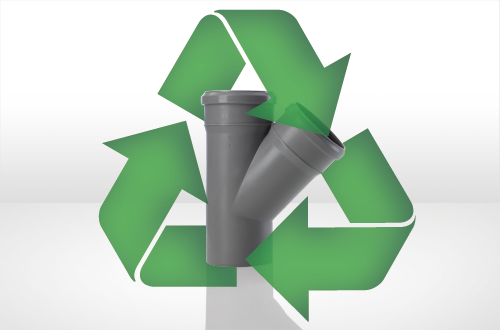
For the processes that are performed within the Valsir factory in Vobarno (BS) primary data were collected, whereas for the other processes secondary data were used from the ecoinvent database. The data refer to the first eight months of 2014. To facilitate the LCA calculations the LCA software SimaPro 8 was used.
For the assessment of the environmental impact two methods of analysis were used: EPD and Recipe. The results are indicated in the table (EPD) and graph (Recipe) below.
The EPD method is composed of six environmental indicators deduced using the CML method 2013: global warming, thinning of the ozone layer, photochemical oxidant creation, acidification, eutrophication and the use of abiotic resources. The impact category concerning global warming was updated according to IPCC 2013.
Tab. 1: Results of the characterisation, EPF method.
| Global warming |
Thinning of ozone layer |
Acidification | Eutrophication | Photochemical oxidant creation |
Abiotic resource depletion |
|
| Unit | kg CO2 eq | mg CFC-11 eq | g SO2 eq | g P43- eq | g C2H4 eq | mg Sb eq |
| Total | 2,87 | 0,07 | 9,86 | 6,29 | 0,61 | 3,77 |
| Raw material | 2,07 | 0,02 | 7,24 | 3,69 | 0,44 | 2,84 |
| Production | 0,33 | 0,04 | 1,31 | 0,30 | 0,10 | 0,27 |
| Distribution | 0,18 | 0,01 | 0,84 | 0,17 | 0,02 | 0,45 |
| End-of-life | 0,22 | 0,00 | 0,08 | 1,99 | 0,01 | 0,01 |
| Pack LCA | 0,07 | 0,00 | 0,39 | 0,15 | 0,04 | 0,20 |
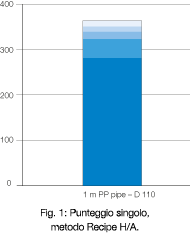
The ReCiPe method is a tool for calculating the totality of the impacts, considering 17 different categories that can be grouped together in three macro-categories: Human Health, Ecosystems and Resources.
The method also includes the possibility of summarizing all the categories in one single value, measured in eco-points; the calculation was performed according to the ReCiPe endpoint method (H) V1.05/Europe ReCiPe H/A.
The calculation performed with the EPD and with the ReCiPe method indicated that the raw materials stage is responsible for the majority of the contributions
For more information on the LCA of PP please contact This email address is being protected from spambots. You need JavaScript enabled to view it. .
The objective of this study is the quantification of the environmental impact of the polyethylene pipe along its life cycle. The functional unit chosen to represent the entire HDPE range is 1 metre of pipe of diameter 110 mm of the HDPE pipe product line. A service life of 50 years was considered.
All the stages of the product’s life cycle were studied with the exception of the use stage: raw material extraction and transport, materials processing, packaging, worldwide distribution and the end-of-life phase.
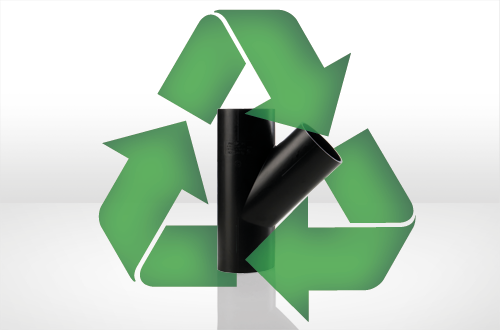
For the processes that are performed within the Valsir factory in Vobarno (BS) primary data were collected, whereas for the other processes secondary data were used from the ecoinvent database. The data refer to the first eight months of 2014. To facilitate the LCS calculations the LCA software SimaPro 8 was used.
For the assessment of the environmental impact, two methods of analysis were used: EPD and ReCiPe. The results are indicated in the table (EPD) and graph (ReCiPe) below.
The EPD method is composed of six environmental indicators deduced using the CML method 2013: global warming, thinning of the ozone layer, photochemical oxidant creation, acidification, eutrophication and the use of abiotic resources. The impact category concerning global warming was updated according to IPCC 2013.
Tab. 1: Results of the characterization, EPD method.
| Global warming |
Thinning of ozone layer |
Acidification | Eutrophication | Photochemical oxidant creation |
Abiotic resource depletion |
|
| Unit | kg CO2 eq | mg CFC-11 eq | g SO2 eq | g P43- eq | g C2H4 eq | mg Sb eq |
| Total | 4,1 | 0,12 | 14,13 | 5,24 | 1,13 | 1,67 |
| Raw material | 3,02 | 0,04 | 10,03 | 0,96 | 0,9 | 0,88 |
| Production | 0,48 | 0,06 | 1,51 | 0,31 | 0,13 | 0,28 |
| Distribution | 0,23 | 0,02 | 2,28 | 0,30 | 0,07 | 0,42 |
| End-of-life | 0,34 | 0,00 | 0,13 | 3,61 | 0,02 | 0,01 |
| Pack LCA | 0,03 | 0,00 | 0,18 | 0,06 | 0,02 | 0,08 |
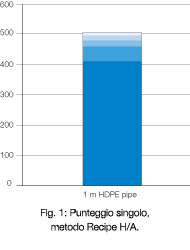
The ReCiPe method is a tool for calculating the totality of the impacts, considering 17 different categories that can be grouped together in three macro-categories: Human Health, Ecosystems and Resources.
The method also includes the possibility of summarizing all the categories in one single value, measured in eco-points; the calculation was performed according to the ReCiPe endpoint method (H) V1.05/Europe ReCiPe H/A.
The calculations performed with the EPD and with the ReCiPe method indicated that the raw materials stage is responsible for the majority of the contributions.
For more information on the LCA of HDPE please contact This email address is being protected from spambots. You need JavaScript enabled to view it. .
Valsir’s attention to the responsible use of resources, in particular a precious commodity such as water has inspired investments in research and technological innovation of its products, to offer the market technologically advanced solutions that respect the environment.
An example of this is the range of in-wall and external cisterns that provides the possibility of a dual flush (7.5/4 litres or 6/3 litres), allowing the user to choose the most suitable quantity of water, constantly guaranteeing an effective flush.
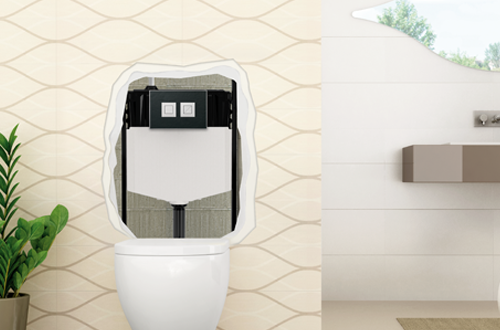
Valsir has developed cisterns that are capable of performing a total flush with just 4 litres of water, thus obtaining the valuable 4Star certification.
By using our flush cisterns, a family of 4 can save up to 11,000 litres of water in one year… the equivalent of 7,300 one and a half-litre bottles of water! Or in other words, the yearly consumption of drinking water of 20 children that live in the “Countries of thirst”.
Radiant panels are ideal for achieving a low temperature heating system and at the same time ensuring an elevated level of comfort, thanks to the uniform distribution of heat inside the room. Valsir radiant systems maximise thermal wellbeing, increase the level of air quality, take advantage of low temperature energy while reducing heat loss and increasing energy savings to the benefit of the environment.
In a household made up of 4 members that is heated with a floor radiant system, energy savings of up to 20% have been registered as compared with traditional heating systems.
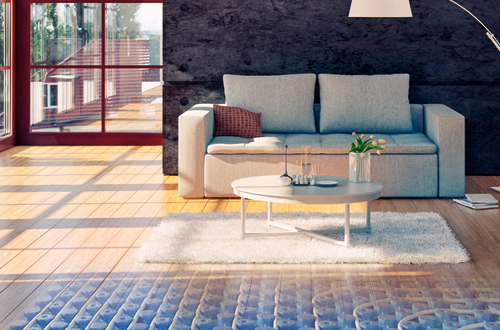
The reasons? The fact that it is the entire floor surface that contributes to heating the environment and that this is done by using low temperature water, at approximately 30-40°C. This in fact makes it convenient to use high efficiency heat sources such as heat pumps, condensation boilers, solar panels.
In addition, the condition of ideal well-being is reached with a floor heating system, producing an average room temperature that is 1°C below that of a traditional heating system and therefore with equal comfort levels there is an energy saving that in our gas bills can reach a further 4-6%, and all in favour of the environment.
The Rainplus® system for the syphonic drainage of rainwater features the most modern technology in the field of drainage from the roofs of medium to large size buildings.
Rainplus® allows the entire flow of water to be directed in an extremely efficient manner to any part of the building whatsoever thus allowing the simple implementation of the most modern rainwater harvesting systems.
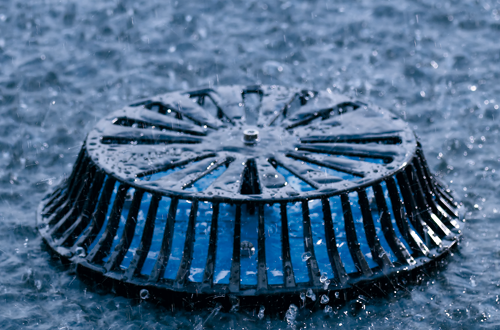
This system allows the accumulation of water for use in irrigation and fire-sprinkling system or tanks where the water is used for non-potable purposes without the need of installing special pumps.
This produces savings not only in terms of the purchase of pumps but also in functioning and maintenance costs.
The technology behind the Rainplus® system fully meets current energy saving requirements, guaranteeing greater levels of performance than any other conventional rainwater drainage system.
By installing a Rainplus® system there is a 70%* reduction in the quantity (kilogrammes) of material installed thus drastically cutting transport costs, the manpower required and the space occupied by the system, and that’s not all. The use of 70% less material can also be seen as a contribution to reducing the quantity of CO2 released into the environment for the production of the pipes and fittings required for the system.
There is an 18%* reduction in energy consumption related to the welding of the pipes and fittings and a 36%* reduction for the installation of the outlets on the roof thanks to the high performance of the same.
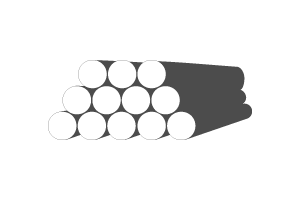

Emissions of CO2 avoided:
In winter months and in certain geographical areas, the opening of a bathroom window to let in fresh air or to let shower or bath steam out can generate a sharp drop in the temperature of the room with a consequent loss of heat and the need for more energy in order to reach the former temperature.
This waste can be avoided by installing Ariapur, the dual extraction fan that extracts odours directly from the WC and extracts any vapour from the room.
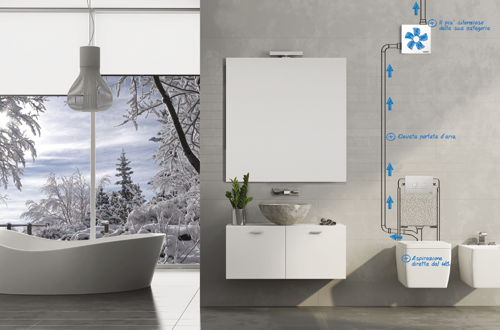
The certification was issued following an in-depth assessment of four significant aspects in order to define the products as “green”:
Production is performed inside the production site of Vobarno, a highly energy efficient building that obtained a class A efficiency rating.
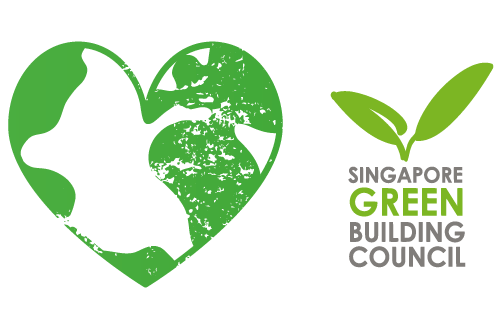
Triplus® and HDPE are completely recyclable
A product can be considered “green” when the process required to install it is also environmentally friendly. To construct systems in HDPE and Triplus® no chemical toxic cements or glues of any type are used.
Joints are created by welding at a low voltage or with a push-fit connection socket with a watertight seal.
The capacity of supplying the market with system solutions that respect the environment and reduce, for example, the number of pipes and fittings employed in a waste or rainwater drainage system.
Both Triplus® and HDPE allow waste and drainage systems to be constructed with a single waste stack and therefore without the need for a second ventilation pipe thanks to the use of ventilation branches.
This particular waste system requires the installation of a special fitting on each floor to which the sanitary appliances are connected and with which it is possible to guarantee excellent ventilation of the pipes and a reduction in pressure fluctuations within the system (for more details: Triplus®, HDPE).
HDPE can also be used to create Rainplus® syphonic drainage systems for the collection and re-use of rainwater, significantly reducing the quantity of pipes and fittings in complete respect of the Green Building principles.
Of equal importance is the capacity of the company and its management to design and implement manufacturing processes that are sustainable from an environmental perspective.
The awareness of the environmental impact of our activities has given way to increasingly diversified and structured initiatives and the subject of sustainability has become central, so much so that it actively encompasses all areas of the organization.
On the one hand it concentrates on the products with the creation of environmentally and recyclable goods, and on the other hand it involves the implementation of sustainable production processes inside buildings with a high energy efficiency.
Constant commitment in pursuing of an environmentally friendly behaviour has been awarded by the excellent results achieved, which we will illustrate here and are an incentive today to persist with the continuous improvement of products and processes.
The collection of data and facts related to our daily commitment towards sustainability is now in our Sustainability Report, born from the desire to establish an open dialogue with our Stakeholders, merging the achievements we obtained to the targets we set ourselves for the future.
The Report gathers the Company's with an overview from 2018 to 2019, in order to have a picture on the five-year period.
In preparing the financial statements we followed the GRI G4 guidelines covering the three major themes for Valsir: Environment and Energy, People and Territory, and Processes Alliance of Values.
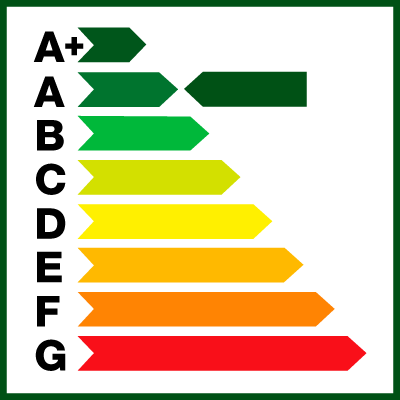
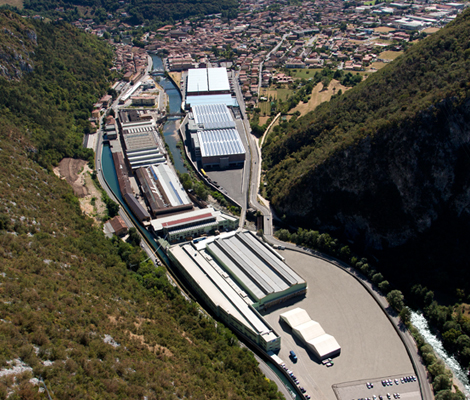
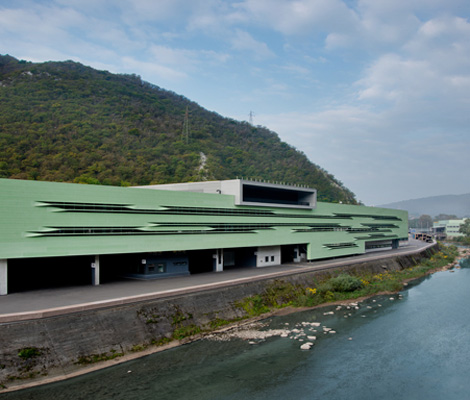
The building was completed in record time, from August 2011 to August 2012, in just one year, from the acquisition and demolition of the dilapidated disused factory to commissioning. It was one of the first production facilities in Europe to be awarded a class A rating in energy efficiency.
The materials for the exterior were chosen to help the building to blend in with the surrounding environment, thus reducing the visual impact as much as possible.
Positioning of the production plants was studied in order to reduce the noise emissions to the nearby residential area to a minimum.
Much consideration was given to consumption optimization: the building was insulated in order to reduce energy loss to the outside and designed in such a way as to exploit natural daylight for internal lighting purposes.
This allows diffused light to be delivered to the production areas, thus significantly improving the quality of the working environment and reducing the consumption of electricity.
The first energy efficiency retrofit works involved the roofs of the premises in Vestone where today solar radiation is used to produce electricity in the production plants in a clean and renewable way by means of photovoltaic panels.
Discover more
In 2014 approximately 100 m2 of solar panels were installed with the capacity of producing renewable thermal energy both for production and for water facilities in the two premises in Vestone and Vobarno.
Discover more
The centralization of the production in the two poles of Vestone and Vobarno has allowed:
Discover more
The installation of a new heating plant, the replacement of the old roof with a new one with less heat loss, the installation of a floor heating system replacing the radiant strips in the areas dedicated to production, in the period from 2007 to 2013, has...
Discover more
The design of the building with a saw-tooth roof which allows the passage of natural daylight, the elimination of wastage, the use of lowconsumption lighting and the introduction of dimming devices that allow the quantity of artificial light to be adjusted depending on the intensity of natural daylight, have resulted in...
Discover more
Many upgrades were also carried out on the production plants in terms of energy efficiency improvement....
Discover more
Many measures were taken aimed at optimizing the IT infrastructure such as:
In Valsir there is a strong awareness of differentiated waste collection at all levels, both in the offices and in the production departments, an activity that requires daily attention and consistency over time.
Discover more
In 2013 Valsir decided to undertake another environmental commitment: the company only prints on FSC paper.
Discover more
Valsir’s attention to the responsible use of resources, in particular a precious commodity such as water has inspired investments in research and technological innovation of its products, to offer the market technologically advanced solutions that respect the environment.
Discover more
Radiant panels are ideal for achieving a low temperature heating system and at the same time ensuring an elevated level of comfort, thanks to the uniform distribution of heat inside the room.
Discover more
The Rainplus® system for the syphonic drainage of rainwater features the most modern technology in the field of drainage from the roofs of medium to large size buildings.
Discover more
In winter months and in certain geographical areas, the opening of a bathroom window to let in fresh air or to let shower or bath steam out can generate a sharp drop in the temperature of the room with a consequent loss of heat and the need for more energy in order to reach the former temperature.
Discover more
The Green Building Council of Singapore issued the Green Building mark for Valsir Triplus® and Valsir HDPE.
Discover more
Life Cycle Assessment is a technique to assess the “environmental impact” of the product, “from the cradle to the grave”.
Discover more
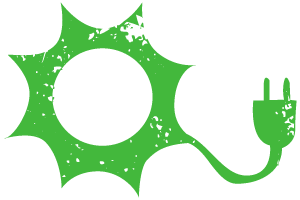
The first energy efficiency retrofit works involved the roofs of the premises in Vestone where today solar radiation is used to produce electricity in the production plants in a clean and renewable way by means of photovoltaic panels.
The photovoltaic plant on the premises in Vestone develops an output of 1 Megawatt and produces a quantity of energy equal to 11% of the yearly requirement of the entire building, making the moulding department, composed of over 50 production plants, energetically autonomous.
Following the retrofit in Vestone, in 2012 another photovoltaic plant was installed with an output of 1 Megawatt on the roof of the production and logistics centre in Vobarno.

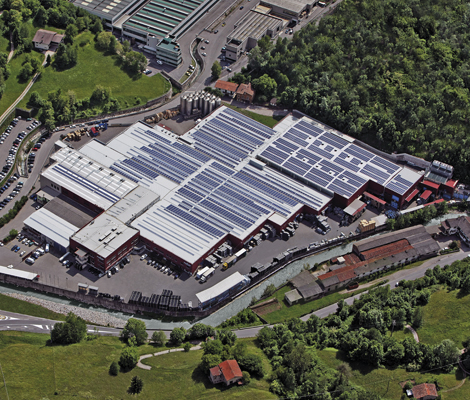
In 2014 approximately 100 m2 of solar panels were installed with the capacity of producing renewable thermal energy both for production and for water facilities in the two premises in Vestone and Vobarno.


The centralization of the production in the two poles of Vestone and Vobarno has allowed:
Besides the reduction in fuel consumption, this has also resulted in improved traffic mobility in the Valle Sabbia area.
The installation of a new heating plant, the replacement of the old roof with a new one with less heat loss, the installation of a floor heating system replacing the radiant strips in the areas dedicated to production, in the period from 2007 to 2013, has resulted in:
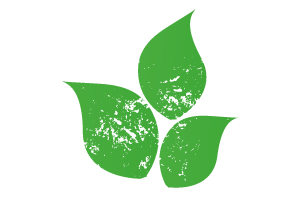
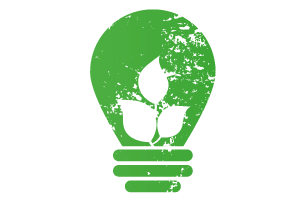
The design of the building with a saw-tooth roof which allows the passage of natural daylight, the elimination of wastage, the use of lowconsumption lighting and the introduction of dimming devices that allow the quantity of artificial light to be adjusted depending on the intensity of natural daylight, have resulted in:
Many upgrades were also carried out on the production plants in terms of energy efficiency improvement.
All the measures were aimed at reducing electricity consumption and involved the installation of:
The results were:

Many measures were taken aimed at optimizing the IT infrastructure such as:
These measures are perhaps less well-known in the field of industrial ecology, but are no less important, in fact, they resulted in:
In Valsir there is a strong awareness of differentiated waste collection at all levels, both in the offices and in the production departments, an activity that requires daily attention and consistency over time.
A comparison of figures for the period 2011-2013 revealed the following:


In 2013 Valsir decided to undertake another environmental commitment: the company only prints on FSC paper.
Forests occupy a role of fundamental importance in the ecosystem but in some countries illegal deforestation is as high as 80% and it often involves the violation of human rights.
The FSC logo identifies wood based products that come from forests that are managed correctly and responsibly in accordance with strict environmental, social and economic standards.
The forest has been inspected and certified independently against the standards that were established and approved by FSC.
FSC stands for Forest Stewardship Council and the FSC certification is the principal mechanism to guarantee the origin of wood or paper.